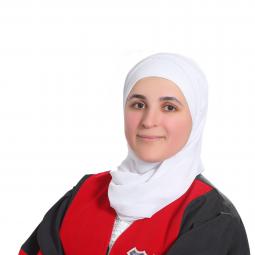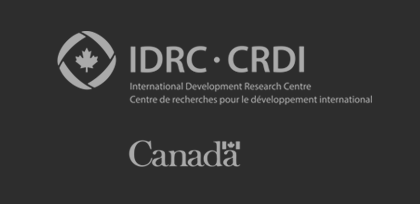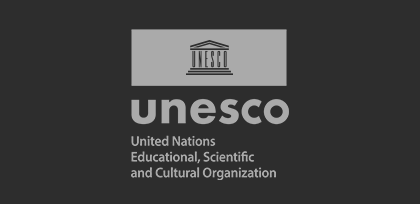Member Profile

Rima Alomari
Country of origin: Jordan Currently in: Jordan, Amman General field of specialization: Chemical Sciences-
Degrees
2019 Doctorate Chemical Sciences2015 Master Chemical Sciences -
Current Research Activities
Chemical Sciences
Research statement-Dr. Rima H. Alomari My research interests lie on the role of electrochemistry in analytical and pharmaceutical analysis using nanostructured electrodes, inorganic composites and catalysts. I am also interest in computational and modeling studies to study different chemical pathways for chemical compounds. My research interests have encompassed many impactful aspects of electrochemistry and computational studies on the chemical activities of some compounds environmentally and pharmaceutically. I prefer multidisciplinary approaches in chemistry due to the integrated relationships of all chemistry sectors and fields. Below is a discussion of my previous and current research as well as future research interests. There is a clear link between the experience I gained in these projects and the development of my current academic and scientific goals. I also describe my interest and activities in science communication. Previous Research I began my research in Chemistry at the master's level, under the guidance of Prof. Abeer Albawab in the Chemistry Department at the University of Jordan, by investigation the effect of the environmental and harsh conditions on a historical Roman glass coated by homemade synthesized sol-gel silica made by Tetraethyl orthosilicate material. During my PhD duration I worked at the Chemistry department -University of Jordan, where I completed my thesis work under the supervision of Prof. “MohammadKhair” Alhourani. My thesis focused on the electrochemical detection of hydroquinone utilizing a homemade aluminosilicate composite sensor. The research comprised of two parts; the first one was synthesizing electroconductive hydroxy-sodalite/graphite composites by alkali-activation of kaolinite in the presence of sodium hydroxide as the alkali activator and graphite as conductive filler the second part was applying some electrochemical systems to the synthetic sensor and harvesting the voltametric response. Another research line of my interests is the computational studies of chemical compounds. I published a detailed computational study of the dehydrogenation reaction of trans-propylamine in the gas phase which had been performed using density functional method (DFT) and CBS-QB3 calculations. Different mechanistic pathways were studied for the reaction of n-propylamine. The work was published in a prestigious journal of Nature (Scientific Reports) titled with Computational study of the unimolecular and bimolecular decomposition mechanisms of propylamine. Another thorough computational study was performed on the thermal degradation mechanism of 2-ethoxyethanol in solvent mixtures in gas phase carried out using different level of theories. Intrinsic reaction coordinate (IRC) calculations were performed to characterize the transition states on potential energy surfaces. I believe that modeling and simulation using computational software packages is an ongoing world-wide revolution which predicts and stimulates many chemical mechanisms and pathways. Present Research Recently, I’ve been selected from Jordanian Society for Scientific Research, Entrepreneurship and Creativity to a join up project with the European union about “Environmental sustainability using nanotechnology products for grape crops in the Mediterranean region”. I presented three different innovative proposals to convert grape waste into beneficial green products using nanotechnology. -The first project proposal was to convert grape waste into weight loss regulators using nanotechnology. -The second research proposal was aimed to extract stilbene resveratrol from grape waste and utilize the extract with the aid of some other additives in in the synthesis of nano capsules for specific neurodegenerative diseases such as Parkinson’s and Alzheimer’s. -The third project proposal was to convert grape waste results from wine factories into soil fertilizers using nanotechnology. Currently, I and couple of scientists from German-Jordanian University and the University of Jordan are working on a promising project on fuel cells. In this research, we expect to prepare a catalyst, made up of Platinum and Carbon which are expected to be efficient toward methanol, formic acid, and formaldehyde oxidation. This research is conducted with the hope of preparing a catalyst with the lowest possible Platinum content and the highest possible oxidation efficiency. The project comes with a very new method to prepare reducing agents. The project contains two main stages: 1) Producing a fuel cell catalyst; 2) utilization of the new catalyst in redox reactions in fuel cells. In another research, we are modifying glassy carbon electrode with different metal oxides for electrochemical detection of some pharmaceutical compounds such as Hydrochlorothiazide, Sulfamethoxazole, and Trimethoprim. Future Research Interests Actually, I would like to extend my research on fuel cells by preparing a new catalyst for CO2 reduction to methane electrochemically, laid on the fact that methane could be alternative of crude oil. The research will follow the following stages: 1) preparing a catalyst for CO2 reduction to methane; 2) designing a cell for electrochemical conversion of CO2 to methane, selectively. a homemade membrane for H2 diffusion will be included in the cell.Current profession
Current professional activities type:ResearchAdministrationTeaching






